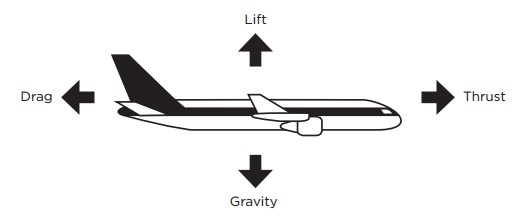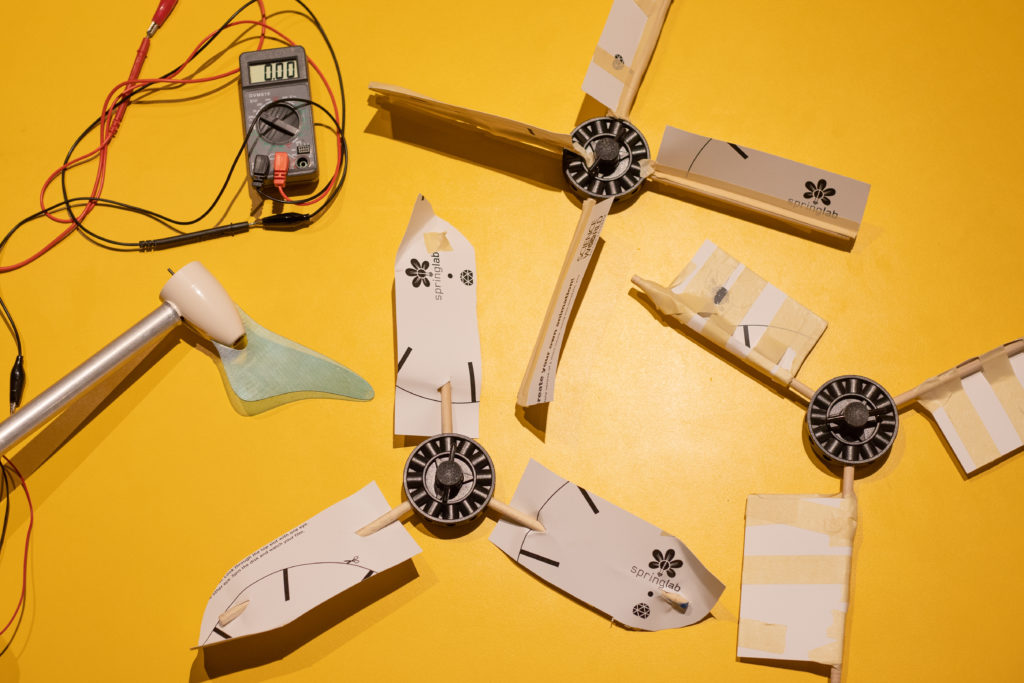In this quick activity, students think, pair, and share their thoughts on the forces that affect an airplane.
An airplane in flight is acted on by four forces: lift, the upward acting force; gravity, the downward acting force; thrust, the forward acting force; and drag, the backward acting force (also called wind resistance).
Lift opposes gravity and thrust opposes drag .
Drag and gravity are forces that act on anything lifted from the earth and moved through the air. Thrust and lift are artificially created forces used to overcome the forces of nature and enable an airplane to fly.
Airplane engine and propeller combination is designed to produce thrust to overcome drag. Their wings are designed to produce lift to overcome gravity.



